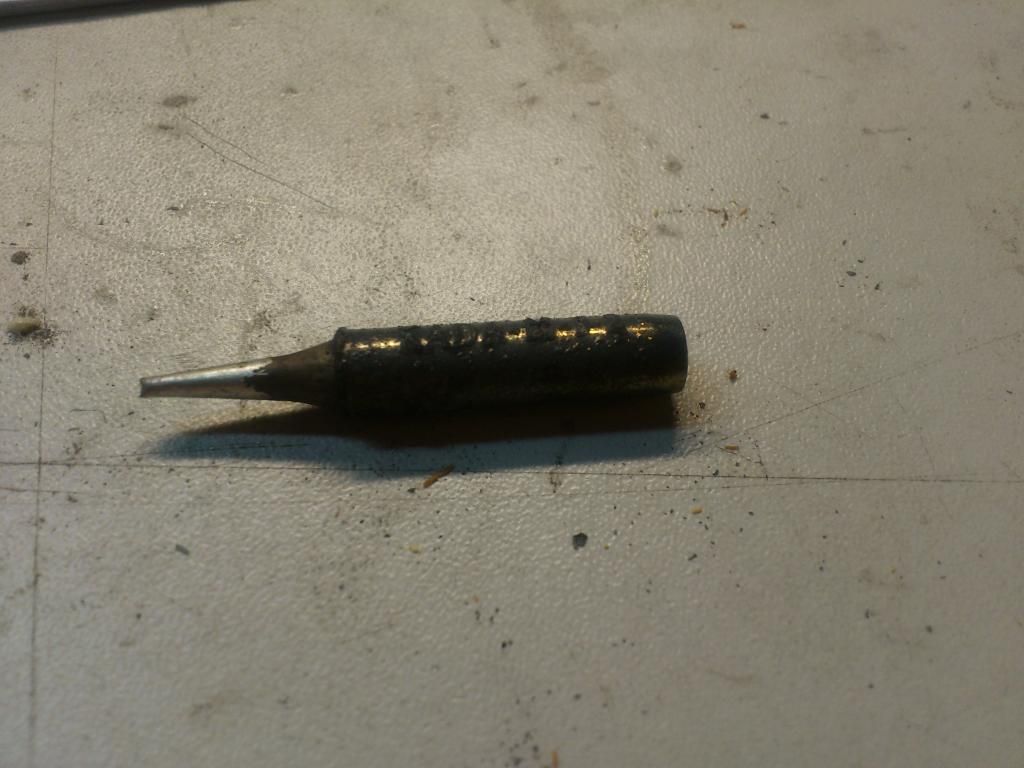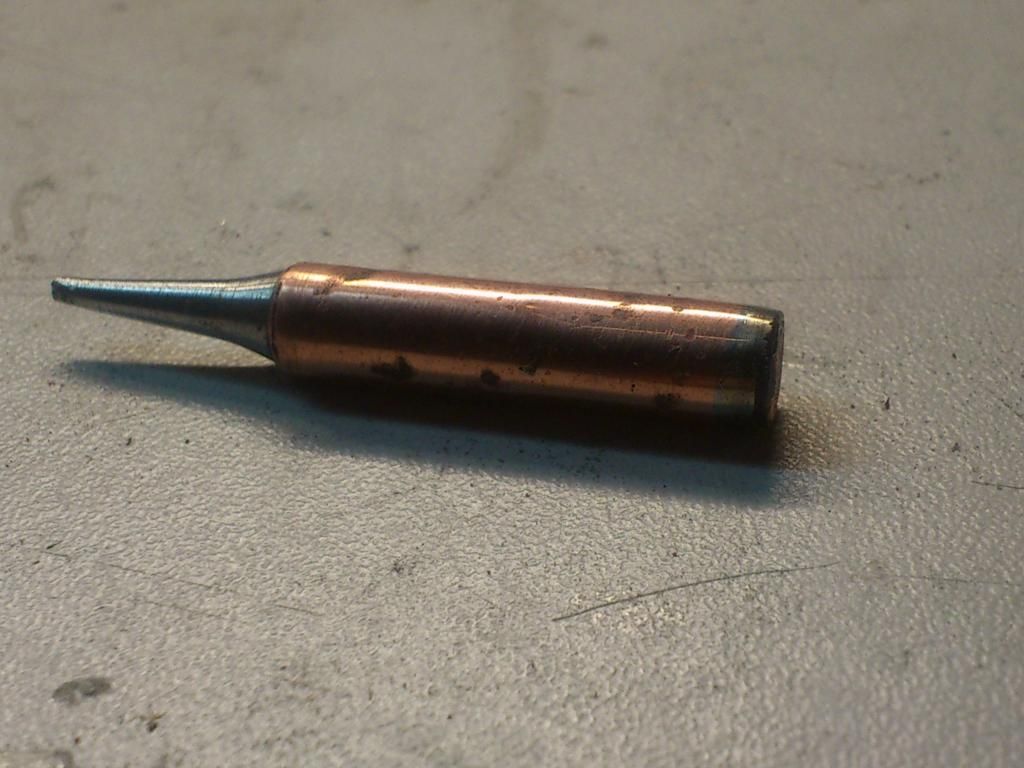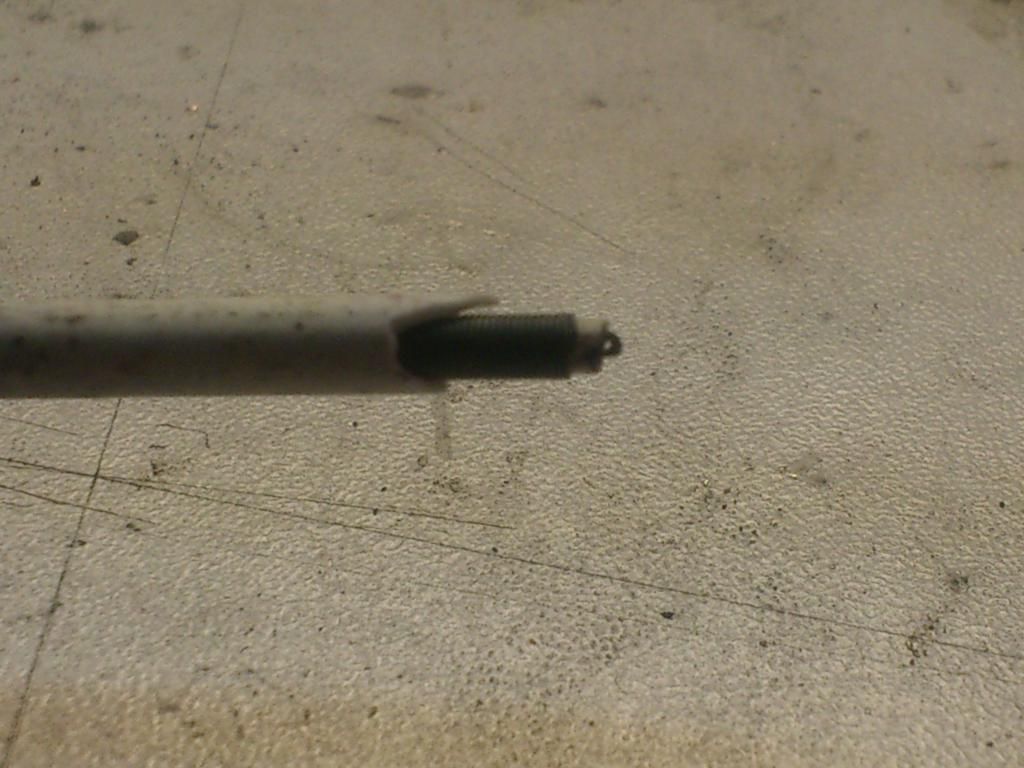Hi.
I've seen topics regarding cheap soldering stations, reviewing them and showing their features but i never saw what they look like after months of use.
So about a half a year ago i bought myself a cheap ( best i could afford ) soldering station.
It was the KADA 936D+ ( oh yeah the plus! ) as it seemed to be pretty much the best option ( 50 bucks delivered to my door ).
The soldering inside was nice, about three adjustment pots ( i have no idea which are which ) and it had heatshrink all around, all the wires used connectors, which were glued down.
But the soldering iron is where it starts to getting bad, i'm talking Really bad.
First of all is the tip.
When it was new it didn't look that bad, but after the half a year or so it got just awful, the nickel plating just disappeared and the copper ( yeah real copper! ) started oxidizing it's way to hell.

I didn't have any spare tips so i tried the best i could to make it a little better.

The base of the tip looks like it's real copper, but the tip looks like some CuFe crap.
Of course while putting the tip back on the heater element broke ( don't ask me how i did it ), it does reveal the insiders of the element, the loop thingy on the end is the heat sensor.

Next is the crappy plastic iron holder.
It had a little stamped sheet metal holder for the sponge ( which was utter crap ), it was painted black, but the paint quickly came off and the metal started rusting.

Of course since it's plastic some oopsies may ruin your day.

The station seems like it does a pretty good lob at sensing temperature, touching the little loop sensor to water makes the tempereature go down to 200
oC in an instant, making the coil glow red hot

.
After all i'm satisfied with this station ( again: best i could afford ) and i do hope that with the new hakko heater and tip it will work at least somewhat decent, certainly better than a 65W automotive iron i'll tell you that much.

Ps: a little question: how much resistance does a genuine hakko heater element sensor have at 200
oC ?
edit: changed the title a little.